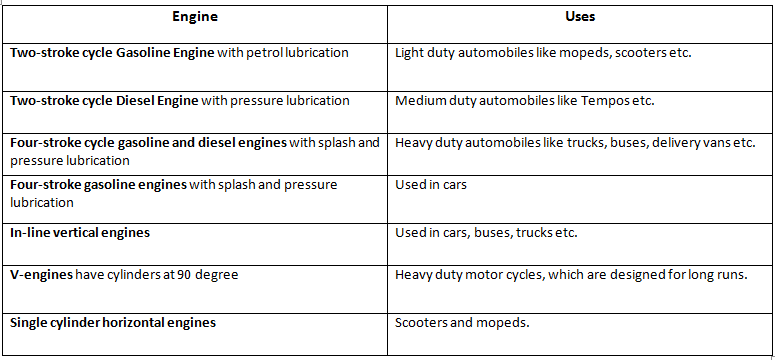←
Automobile Engineering
Use Of The Engines
Introduction:
Different types of the engines have their usage in various automobiles.

Engine Operating Principles:
- One of the many laws of physics utilized within the automotive engine is thermodynamics. The driving force of the engine is the expansion of gases.
- Gasoline (a liquid fuel) will change state to a gas if it is heated or burned. Gasoline must be mixed with oxygen before it can burn.
- In addition, the air-fuel mixture must be burned in a confined area in order to produce power. Gasoline that is burned in an open container produces very little power, but if the same amount of fuel is burned in a closed container; it will expand producing usable force. When the air and fuel mixture changes states, it also expands as the molecules of the gas collide with each other and bounce apart. Increasing the temperature of the gasoline molecules increases their speed of travel, causing more collisions and expansion.
- Heat is generated by compressing the air-fuel mixture within the combustion chamber. Igniting the compressed mixture causes the heat, pressure, and expansion to multiply. This process releases the energy of the gasoline so it can produce work. The igniting of the mixture is a controlled burn, not an explosion.
- The controlled combustion releases the fuel energy at a controlled rate in the form of heat energy. The heat, and consequential expansion of molecules, dramatically increases the pressure inside the combustion chamber. Typically, the pressure works on top of a piston that is connected to a crankshaft.
- The expanding gases push the piston down with tremendous force. As the piston is forced down, it causes the crankshaft to turn. This twisting force on the crankshaft is called torque.
- Torque is applied to the drive wheels through the transmission. As the engine drives the wheels to move the vehicle, a certain amount of work is done. The rate of work being performed is measured in horsepower.